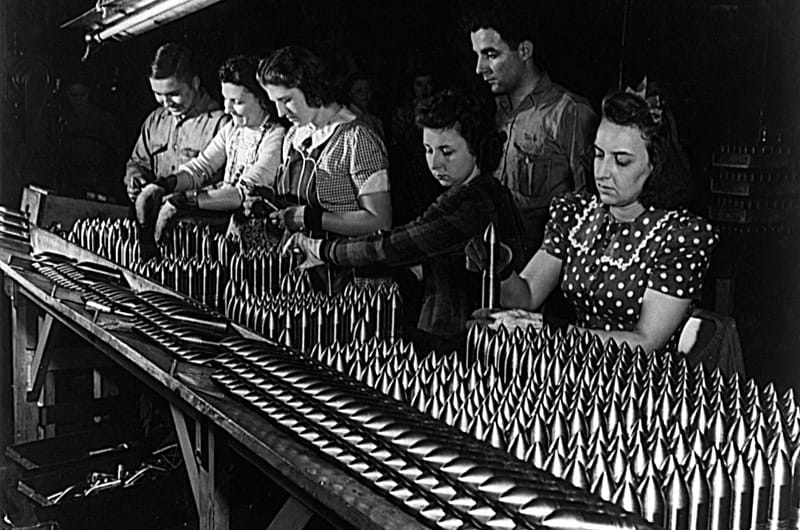Drexel Sociologist’s New Book Explores the Double-Edged Sword of “The Age of Aluminum”

- Drexel Selects New, World-Class Life Sciences Building at 3201 Cuthbert Street for Medical Research Operations
- Turn Happy Places and Memories into a Happy New Year
- Breakthrough on Gene Therapy for Hereditary Spastic Paraplegia
- Drexel Environmental Collaboratory Releases Cross-Sector Findings on Severe Weather Recovery Challenges

Coca-Cola cans. Apollo 11. The Empire State Building. Aluminum can be found everywhere from common household objects to the greatest inventions of humankind. But are there unseen costs associated with this ubiquitous metal? In a new book, Drexel University’s Mimi Sheller, PhD, explores how aluminum enabled a high-speed, gravity-defying American modernity even as other parts of the world paid the price in environmental damage and political turmoil.
Coca-Cola cans. Apollo 11. The Empire State Building. Aluminum can be found everywhere from common household objects to the greatest inventions of humankind. But are there unseen costs associated with this ubiquitous metal? In a new book, Drexel University’s Mimi Sheller, PhD, explores how aluminum enabled a high-speed, gravity-defying American modernity even as other parts of the world paid the price in environmental damage and political turmoil.
Called a “terrific biography of the metal that shaped the world we live in” by Engineering & Technology Magazine, “Aluminum Dreams: The Making of Light Modernity” (MIT Press, 2014) follows the cultural history of aluminum around the world as Sheller exposes the double-edged sword that is the “age of aluminum.” For more information and to purchase the book, visit the MIT Press website.
According to Sheller, aluminum changed mobility and mobilized modern life. It enabled high-speed travel, the space age and moon landings. It was the material of a streamlined aesthetic that came to represent modernity, and it became an essential ingredient in industrial and domestic products that ranged from airplanes and cars to designer chairs and artificial Christmas trees. It entered modern homes as packaging, foil, pots and pans and even infiltrated our bodies through food, medicine and cosmetics. In “Aluminum Dreams,” Sheller describes how the materiality and meaning of aluminum transformed modern life and continues to shape the world today.
According to Sheller, aluminum changed mobility and mobilized modern life. It enabled high-speed travel, the space age and moon landings. It was the material of a streamlined aesthetic that came to represent modernity, and it became an essential ingredient in industrial and domestic products that ranged from airplanes and cars to designer chairs and artificial Christmas trees. It entered modern homes as packaging, foil, pots and pans and even infiltrated our bodies through food, medicine and cosmetics. In “Aluminum Dreams,” Sheller describes how the materiality and meaning of aluminum transformed modern life and continues to shape the world today.
“Aluminum is really valuable, and we actually need to value it more,” Sheller said. “As consumers, we need to appreciate it and not just throw it away. It only takes 5 percent as much energy to recycle your aluminum as it does to make it new. In the U.S., we throw away about 55 billion cans each year, all of which could go back into production quickly. At the same time, a handful of big transnational corporations control the industry, and really need more transparency, accountability and corporate responsibility.”
“Aluminum Dreams” includes striking images of iconic aluminum designs, many in color, drawn from advertisements by Alcoa, Bohn, Kaiser and other major corporations, pamphlets, films and exhibitions.
Here is a video clip by the Mobiles Lives Forum of Sheller discussing “Aluminum Dreams”:
[iframe src="//player.vimeo.com/video/66142432?title=0&byline=0&portrait=0&color=ff0179" width="500" height="275" frameborder="0" webkitallowfullscreen mozallowfullscreen allowfullscreen]
For a Q+A with Sheller about her new book, click here.
About Mimi Sheller
Sheller has played a central role in advancing the new mobilities paradigm within the social sciences, co-founding the Centre for Mobilities Research at Lancaster University in the U.K. and the international journal Mobilities. Through her own research on automobility, tourism mobilities, and Caribbean mobilities, she has helped to develop the field of mobilities research. Sheller is the author of Democracy after Slavery (2000); Consuming the Caribbean (2003); and Citizenship from Below (2012), as well as several co-edited volumes in critical mobilities studies.
About the Center for Mobilities Research and Policy
The Center for Mobilities Research and Policy (mCenter) at Drexel University promotes new theoretical approaches, new methods, and the academic leadership to research, envision, and foster alternative mobility futures based on innovative collaborations between the arts and social sciences, participatory engineering, business, media and design, and public health. This is an area of growing academic interest, policy debate, and research investment. The mCenter is a nexus for generating innovative collaborations within Drexel, across the Greater Philadelphia region, and internationally. For more information, click here.
Drexel News is produced by
University Marketing and Communications.